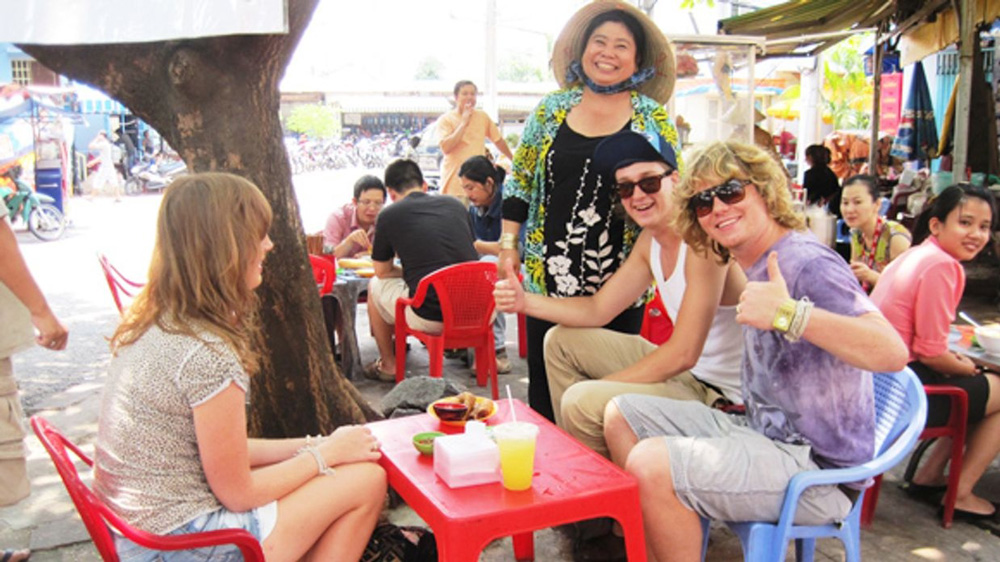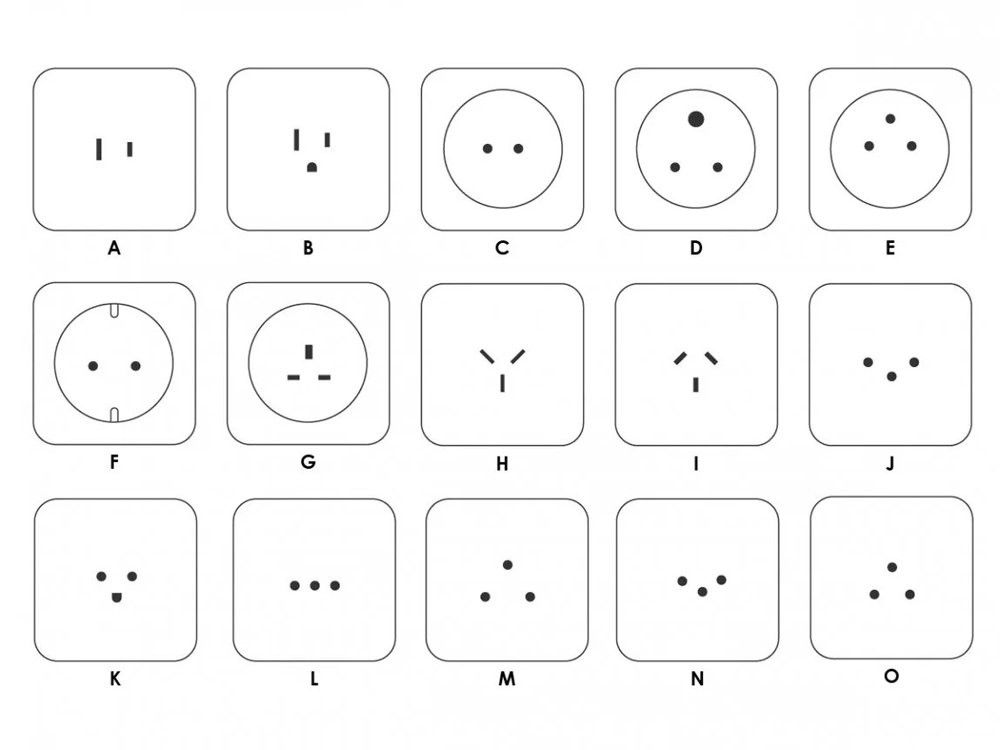Vietnam, with its diverse landscapes and vibrant culture, is a destination that offers something unique in every season. Whether you're seeking adventure in the mountains, relaxation on the beaches, or cultural immersion in the cities, the timing of your visit can make all the difference. This guide breaks down the best times to experience Vietnam’s beauty, from the lush greenery of the rainy season to the pleasant coolness of autumn. Plus, we’ve included essential packing tips to help you prepare for your journey, no matter when you choose to explore this captivating country.
Vietnam's diverse climate means that the best time to visit can vary depending on the region. In North Vietnam, autumn (September to November) offers ideal weather with warm days and clear skies, making it perfect for exploring places like Hanoi and Sapa. In South Vietnam, the dry season from December to April provides sunny, beach-friendly weather, ideal for destinations like Ho Chi Minh City and Phu Quoc Island. For Central Vietnam, plan your visit during the dry season from April to September to enjoy the stunning beaches of Da Nang and Hoi An. However, it's wise to avoid the rainy season from October to March, which can bring typhoons to the region.
Autumn in North Vietnam, spanning from September to November, is the ideal time to explore this culturally rich and visually stunning region. The weather during these months is delightfully warm, with clear, blue skies that provide the perfect backdrop for your adventures. This is the best time to immerse yourself in the vibrant atmosphere of Hanoi, with its bustling streets and historic landmarks, or to embark on treks through the breathtaking terraced rice fields in Sapa.
While winter in North Vietnam can bring chilly temperatures, and the summer months are often hot and humid, autumn strikes a perfect balance, offering comfortable weather conditions that enhance your travel experience. This season is also perfect for a Halong Bay cruise, where the mild weather makes outdoor activities like kayaking, swimming, and island hopping even more enjoyable. The natural beauty of Halong Bay is further amplified by the clear autumn skies, making it an unforgettable experience. If you’re planning to visit North Vietnam, there’s no better time than autumn to enjoy all the region has to offer.
South Vietnam is a paradise for sun-seekers and beach lovers, especially during the dry season, which stretches from December to April. This period is marked by sunny skies, warm temperatures, and minimal rainfall, creating perfect conditions for a Halong cruise or a beach holiday in bustling cities like Ho Chi Minh City or the idyllic island of Phu Quoc. The clear, calm waters are ideal for swimming, snorkeling, and diving, while the consistent sunshine invites endless days of lounging by the beach.
During these months, the region’s natural beauty is on full display, with the coastal landscapes offering the perfect backdrop for a relaxing getaway. Whether you’re exploring the vibrant city life of Ho Chi Minh City or unwinding on the pristine beaches of Phu Quoc, the dry season ensures that your plans won’t be dampened by unexpected showers.
However, the rainy season from May to November also has its charm. While this period brings higher humidity and frequent showers, it also transforms the landscape into a lush, green paradise. The rains, often brief and refreshing, give life to the region's flora, making it an excellent time for those who appreciate the beauty of nature in full bloom. Plus, the off-peak season means fewer tourists and more serene experiences, whether you're exploring the Mekong Delta or relaxing on a quiet beach.
In essence, South Vietnam offers something for every traveler, with the dry season providing the perfect conditions for sun-soaked adventures and the rainy season offering a peaceful, green retreat.
Central Vietnam is a region renowned for its stunning coastal cities like Da Nang and Hoi An, where golden beaches meet turquoise waters. The best time to embark on a Halong cruise or explore this vibrant region is during the dry season, which spans from April to September. During these months, the weather is warm and sunny, making it perfect for beach days, cultural explorations, and enjoying the rich history that cities like Hoi An have to offer.
The dry season is also when you can fully experience the region's outdoor activities. Whether you're lounging on My Khe Beach, taking a scenic cruise through Halong Bay, or wandering through the ancient streets of Hoi An, the clear skies and gentle breezes create an ideal environment for both relaxation and adventure.
However, the rainy season, which runs from October to March, brings a different dynamic to Central Vietnam. This period can be challenging for travelers, as it often brings heavy rains and the risk of typhoons. These conditions can disrupt travel plans, making it less favorable for those looking to enjoy the beaches and outdoor attractions. The rain can also affect the visibility in Halong Bay, which is a key factor to consider if a Halong cruise is on your itinerary.
For those planning a trip to Central Vietnam, it's clear that the dry season offers the most favorable conditions for enjoying the region's natural beauty and cultural treasures. Whether you're drawn to the lively markets of Da Nang, the charming lantern-lit streets of Hoi An, or the breathtaking seascapes of Halong Bay, timing your visit during the dry season ensures a smooth and memorable experience.
Planning a trip to Vietnam? Make sure you're prepared with these essential packing tips, tailored to suit the country's diverse climates. From lightweight clothing to rain gear and insect repellent, we've got you covered no matter when you visit. Don't forget your sunscreen, a good pair of walking shoes, and a universal adapter to keep you comfortable and connected throughout your journey. With the right gear in your suitcase, you're all set to explore Vietnam's vibrant cities, lush landscapes, and rich cultural heritage to the fullest.
When planning your trip to Vietnam, one of the most important considerations is what to wear, especially given the country’s tropical climate. Lightweight, breathable clothing is a must, as it will keep you comfortable whether you’re exploring bustling cities, hiking through lush landscapes, or relaxing on the beach. Fabrics like cotton, linen, and moisture-wicking materials are ideal because they allow air to circulate, helping to regulate your body temperature and keep you cool. Additionally, quick-drying fabrics are particularly handy, especially if you’re traveling during the rainy season or planning to do a lot of outdoor activities. These materials ensure that even if you get caught in a sudden downpour, you won’t be left feeling damp and uncomfortable for long. By choosing the right clothing, you can focus on enjoying your adventure in Vietnam, no matter what the weather throws your way.
When planning your trip to Vietnam, packing the right rain gear is essential, especially if you’re visiting during the rainy season, which typically runs from May to November. A compact raincoat or umbrella is indispensable for navigating the frequent and sometimes unexpected downpours that characterize this time of year. Opt for a lightweight, foldable raincoat that can easily fit into your day bag, ensuring you’re always prepared, whether you’re exploring the vibrant streets of Ho Chi Minh City or hiking through the lush landscapes of Sapa. An umbrella is another great option, providing quick and easy protection from the rain. By being well-prepared with the right rain gear, you can enjoy your Vietnamese adventure without letting a little rain dampen your spirits.

When planning your trip to Vietnam, it’s crucial to prepare for the country’s intense sun, especially if you’re visiting during the dry season, which runs from December to April. The tropical climate, with its clear skies and abundant sunshine, can be harsh on your skin, making sunscreen and a good hat essential items for your packing list. Opt for a high-SPF sunscreen that offers broad-spectrum protection against both UVA and UVB rays, and make it a habit to apply it generously before heading out each day, reapplying as needed, especially after swimming or sweating.
A wide-brimmed hat is another must-have for shielding your face and neck from the sun's rays, helping to prevent sunburn and keep you cool as you explore Vietnam's vibrant cities, stunning beaches, and lush countryside. Whether you’re strolling through the bustling streets of Hanoi, lounging on the beaches of Da Nang, or trekking through the terraced fields of Sapa, being well-equipped with sunscreen and a hat will ensure that you stay protected and comfortable throughout your journey.

When planning your trip to Vietnam, one essential item that should top your packing list is insect repellent. This is particularly important if you plan to explore the country’s beautiful rural areas, where mosquitoes and other insects are more prevalent. Vietnam’s lush landscapes, from the rice paddies of Sapa to the dense jungles of the Mekong Delta, are undoubtedly breathtaking, but they also provide the perfect habitat for mosquitoes.
To ensure your trip is both enjoyable and worry-free, carry a reliable insect repellent that contains DEET or another effective ingredient. Applying repellent to exposed skin, especially during dawn and dusk when mosquitoes are most active, can help protect you from bites and reduce the risk of mosquito-borne illnesses like dengue fever. Additionally, consider wearing long sleeves and pants in the evenings and sleeping under a mosquito net if you're staying in rural accommodations.
By taking these simple precautions, you can focus on soaking in the natural beauty of Vietnam’s countryside without the distraction of pesky insects. Whether you’re trekking through mountain villages, boating through lush riverways, or simply enjoying a sunset in the countryside, having insect repellent on hand will help ensure a comfortable and memorable experience.

When planning your trip to Vietnam, one of the most important items to pack is a pair of good walking shoes. Whether you're wandering through the bustling streets of Hanoi, trekking the terraced hills of Sapa, or strolling along the scenic coastline of Da Nang, comfortable footwear is essential to fully enjoy the experience.
Vietnam's diverse landscapes and vibrant cities offer endless opportunities for exploration, but they also present a variety of terrains. From uneven cobblestone streets in ancient towns like Hoi An to the rugged trails of the northern mountains, having supportive, durable shoes will keep your feet comfortable and protected throughout your journey.
Opt for shoes that are lightweight, breathable, and provide good grip, especially if you plan on hiking or walking long distances. A well-cushioned pair will also help reduce fatigue, allowing you to spend more time discovering the hidden gems of Vietnam without worrying about sore feet.
By packing the right shoes, you're setting yourself up for a more enjoyable and stress-free adventure. Whether you're navigating busy markets, exploring historical sites, or simply taking in the natural beauty, good walking shoes are your best companion for making the most of your trip to Vietnam.

When planning your trip to Vietnam, packing a basic first-aid kit is a small step that can make a big difference in ensuring a smooth and enjoyable journey. While Vietnam is a relatively safe and well-equipped destination for travelers, having a first-aid kit on hand can provide peace of mind and be a lifesaver in minor emergencies.
Your kit doesn't need to be extensive, but it should cover the essentials. Start with basic items like bandages, antiseptic wipes, and adhesive tape to treat any minor cuts or scrapes you might encounter while exploring Vietnam's diverse landscapes. Including pain relievers and any personal medications you might need ensures you're prepared for headaches, muscle soreness, or other common ailments that can occur during travel.
In a country where you might find yourself trekking through remote areas, such as the mountainous regions of Sapa or the less-touristy parts of Central Vietnam, a well-stocked first-aid kit becomes even more important. Access to medical supplies might be limited in these areas, so having your own kit allows you to address any issues immediately and continue your adventure without unnecessary stress.
In addition to the basics, consider adding items like motion sickness tablets if you plan on taking long bus or boat rides, and any other specific medications that cater to your health needs. By being prepared, you can focus on enjoying the stunning beauty, rich culture, and vibrant energy that Vietnam has to offer, knowing you're equipped to handle any minor bumps along the way.

When planning your trip to Vietnam, one small but essential item to pack is a universal adapter. Vietnam uses two different plug types—Type A, which has two flat parallel pins, and Type C, which has two round pins. These are common in many parts of the world, but if you're coming from a country with a different plug configuration, you may find yourself unable to charge your devices or use other electronics.
Bringing a universal adapter not only ensures that you can keep your gadgets powered up, but it also saves you the hassle of searching for an appropriate adapter once you arrive. While some hotels in larger cities like Hanoi and Ho Chi Minh City might provide adapters or have outlets that accommodate multiple plug types, this is not something you can count on, especially if you plan to explore more rural or less touristy areas of Vietnam.
A universal adapter is compact, lightweight, and easy to carry, making it a convenient addition to your travel essentials. Some even come with multiple USB ports, allowing you to charge several devices at once—a handy feature when you're on the go and need to power up your phone, camera, and other electronics.




